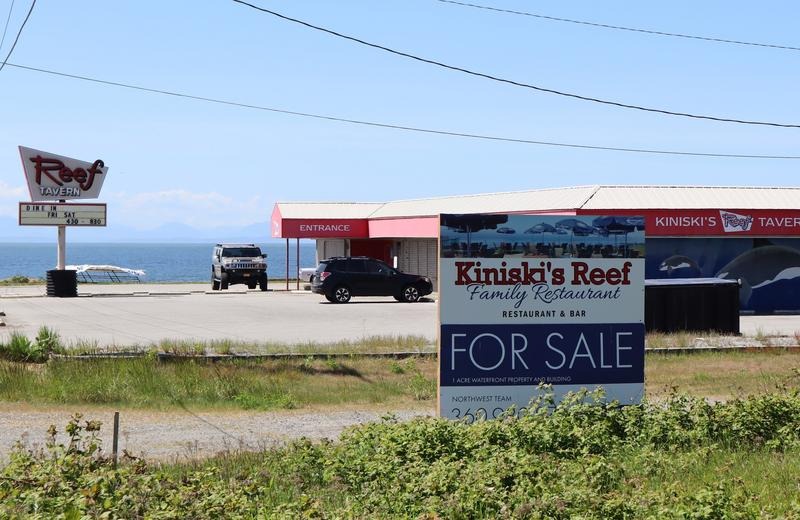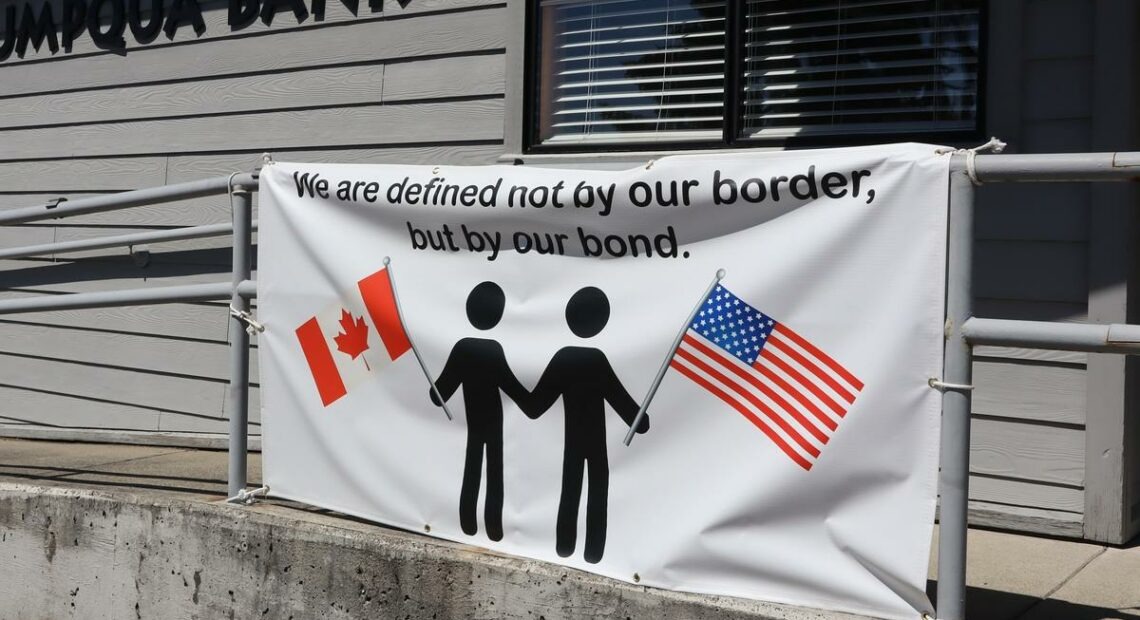
Ongoing Border Closure Makes Washington Enclave Of Point Roberts ‘Stir Crazy’
Listen
The United States and Canadian governments confirmed Thursday that pandemic border crossing restrictions will continue for at least another month to June 21. This is the fourteenth month-by-month extension of the closure of the northern border to nonessential crossings. The lengthy closure has been especially wearing on Point Roberts, a community in northwestern Washington state that is cut off from the U.S. mainland by the Canadian border.
Beaches and saltwater rim Point Roberts on three sides while the suburbs of Vancouver, Canada, press up against its land border. The geographical position has the U.S. territory hurting both economically — and in some cases, physically.
Point Roberts resident Pamela Robertson was in terrible pain last month with an abscessed tooth and needed to go to the dentist. There is no dentist on the scenic peninsula, so she would have to drive five minutes into British Columbia. But this grandmother said she was turned away the first time she went to the border.
“I mean, I’ve got this abscess in my mouth,” Robertson recalled with befuddlement about her conversation with the border officer. “They said, ‘Nope. It’s got to be essential.’ That’s when I said to them, ‘What is essential?’ The guard looked me straight in the face and he said, ‘You have to be dying.'”
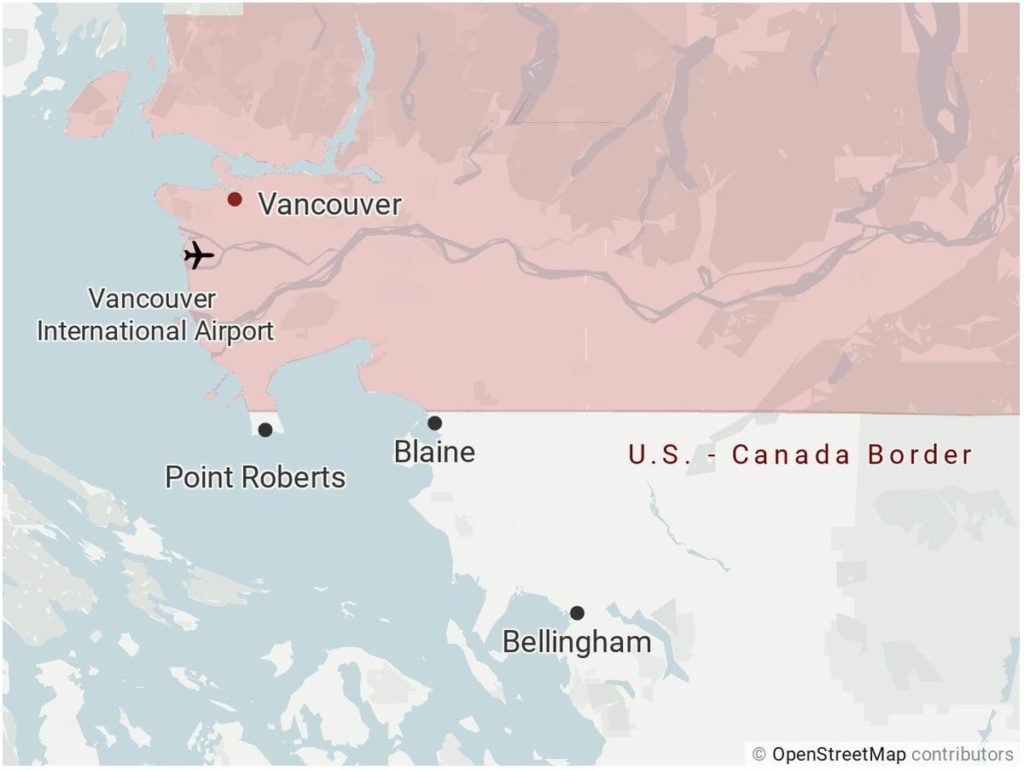
Point Roberts , Washington, on the southern tip British Columbia is stuck between a rock and a border closure during the pandemic. CREDIT: Esmy Jimenez/KUOW. Created with DataMapper
Robertson went back home, but the pain only got worse. She dragged her swollen face back to the border days later and a different officer let her cross, but ordered her to quarantine at a relative’s house for 14 days before going to the dentist.
“We know that everybody is trying to help and be as safe as possible. But, c’mon,” Robertson said in an interview back home this month. “Be lenient. Be understanding. If your dog needs to go to the vet. If you have to go to the doctor, those kinds of things.”
Point Roberts fire chief Christopher Carleton said the isolation caused by the border restrictions has reduced the year-round population by around one-third. He estimated the current population at below a thousand people. They are going “stir crazy,” Robertson added.
Community leaders said it is time for Ottawa and Washington, D.C. to at least lay out a plan for a staged reopening of the border.
Point Roberts Chamber of Commerce President Brian Calder offered a driving tour of closed or struggling businesses to make his case. Behind the wheel of his pickup truck, he turned first into a subdivision of getaway cottages.
“Normally, this would be full,” he said, gesturing down the lane of houses. “There would be probably 60 cars here. We’ve seen two.”
Calder explained the Point Roberts economy is heavily dependent on Canadian visitors and second home owners who largely have been unable to get in for more than a year.
“No lawns done,” Calder noted on his way out of the eerily quiet neighborhood. “Blackberries taking over.”
He then cruised slowly past deserted filling stations that advertised the gas prices on their marquees in liters as opposed to gallons, as would be customary everywhere else in Washington state. Next came the unfinished shell of a UPS parcel pickup and mailing store.
“They are not going to finish until something positive happens, i.e., get the Canadians back,” Calder said with rising emotion. “That’s what it is all about.”
Calder and others suggested Point Roberts be used as a pilot project for a phased border reopening.
“Use it as a test case because we’re easy to control. We’re only a thousand people. We’re only five square miles,” he said. “Do a test case and ease reopening — with testing and vaccinations and so forth — have all protocols followed and monitor it.”
Washington Gov. Jay Inslee spoke with British Columbia Premier John Horgan on Thursday morning about border issues and vaccines, alongside a few other topics. Beforehand, Inslee said he wished to see movement “in the near future” on the border closure.
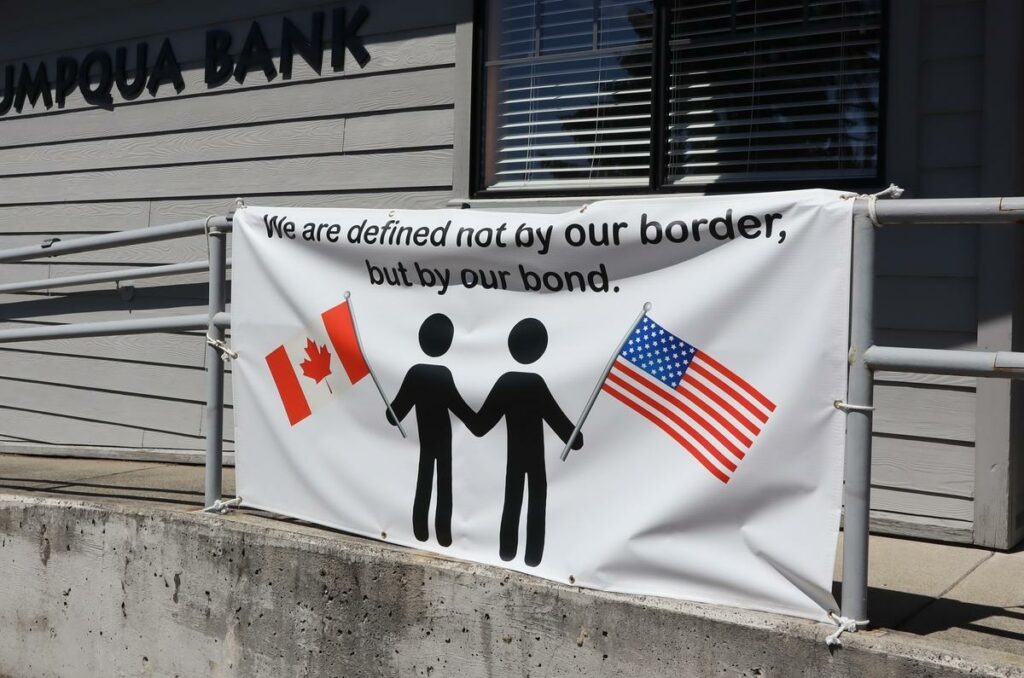
A common sign hanging outside businesses in Point Roberts that yearn to have Canadian visitors back. CREDIT: Tom Banse/N3
“I don’t know exactly what that would entail,” Inslee told reporters. “But given the progress we are making with increased vaccination, I would hope we could make progress on that in the upcoming months.”
According to a summary of the leaders’ call provided by Inslee’s office, the governor and premier acknowledged they don’t have direct control over the international border. But given the improved disease trends on both sides, they will be encouraging their respective federal governments “to look at innovative ways of at least partially reopening” the U.S.-Canada border.
The wariness about easing border restrictions appears to be mostly coming from the Canadian side. U.S. senators and representatives from northern border states have peppered Prime Minister Justin Trudeau and the Canadian ambassador to Washington with numerous letters requesting a safe, staged reopening of the land crossings for discretionary trips. The letters typically draw nothing more than a polite acknowledgement of receipt, according to congressional staff.
An hour’s drive to the east of Point Roberts near the Lynden/Abbotsford border crossing, couples and families divided by the U.S.-Canada border closure plan to demonstrate and wave flags and posters on opposite sides of the boundary line on Saturday afternoon. The rally is being organized by people active in Facebook groups named “Families are Essential” and “Love is Not Tourism.”
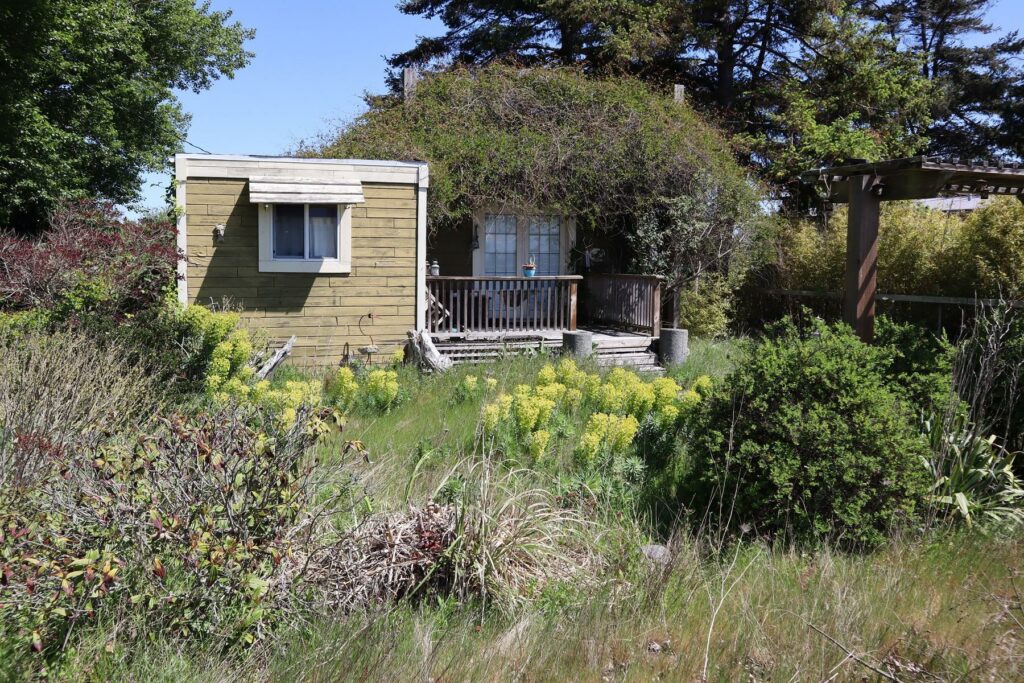
Second homes in Point Roberts owned by Canadians can be easily recognized by their overgrown yards. The extended border closure keeps the owners away. CREDIT: Tom Banse/N3
Last week, Bloomberg and CBC News reported that the U.S. and Canadian governments had opened “preliminary” talks about how a phased reopening of their border might happen. The stories, based on anonymous sources, said one proposal on the table was to ease testing and quarantine requirements for vaccinated travelers, perhaps verified with a vaccine passport.
The Canada Border Services Agency has a smartphone app called ArriveCAN that could potentially be adapted to verify vaccination status. But one catch is that the Biden administration has said the U.S. government won’t create and manage a digital health passport.
In announcing the latest extension to June 21 of the border crossing restrictions, the U.S. Department of Homeland Security tweeted a vague statement Thursday saying, “We’re working closely with Canada & Mexico to safely ease restrictions as conditions improve.”
Canada has no domestic COVID-19 vaccine production and is trailing behind the U.S. in vaccinating its citizens.
Trudeau suggested during a media briefing in Ottawa on Tuesday that 75% of the country’s population will need to be vaccinated before the border can be reopened. As of last weekend, 49% of Canadians had gotten at least their first shot compared to 48% of the total American population.
The U.S. and Canada mutually agreed in March 2020 to close their land and sea border to nonessential crossings — such as for tourism and shopping — to limit the spread of COVID-19. Air travel continues at a reduced level, but passengers entering or returning to Canada generally have to quarantine for 14 days and submit to pre-arrival and post-arrival virus testing.
Truckers moving goods across the border and some business commuters are exempt from the restrictions. The two countries agreed last year to make allowances for cross-border travel for compassionate purposes such as family reunions, funerals or for separated spouses to see each other. In those cases, the strict, 14-day quarantine requirement still applies, which has presented a barrier to working people.
This story has been updated to reflect a new vaccination percentage for Canada residents based on additional data.
Related Stories:
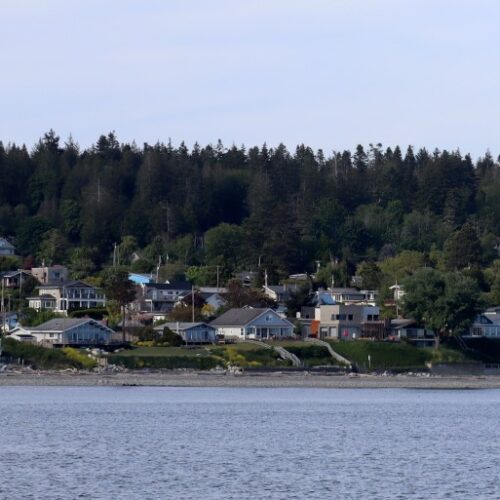
In A Hot NW Housing Market, Even Isolated Point Roberts Is Seeing Prices Sizzle
How hot is the Pacific Northwest real estate market? So hot that even in an isolated exclave such as Point Roberts, Washington, home prices are sizzling and some properties are changing hands sight unseen.
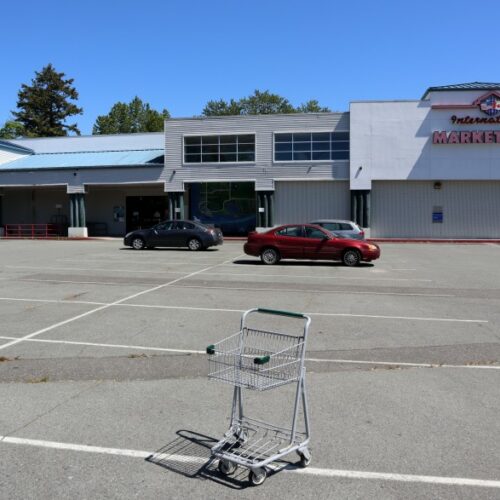
Food Crisis Feared In Washington Town Isolated By Border As Only Grocery Store Teeters On Closure
A local fire chief is warning of a looming “humanitarian crisis” on the peninsula of Point Roberts in northwest Washington state. It’s a strange predicament brought on by a money-losing supermarket and pandemic-related restrictions on crossing the U.S.-Canada border.
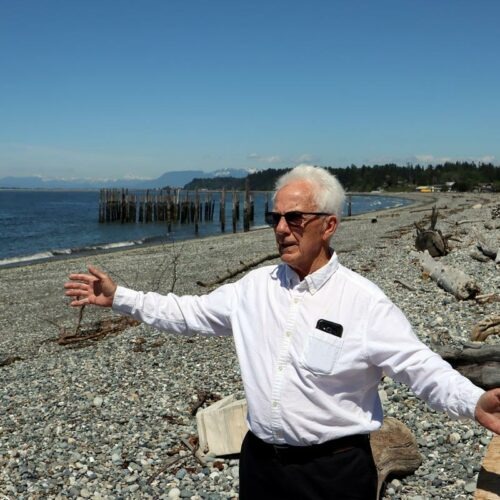
Hey, Canadians, Come Get A Shot, Proposes Small Washington Enclave Of Point Roberts, USA
As the story of the COVID-19 vaccine in the Pacific Northwest changes from scarcity to surplus, one northwestern Washington community says it is in a unique position to extend a helping hand across the border.

